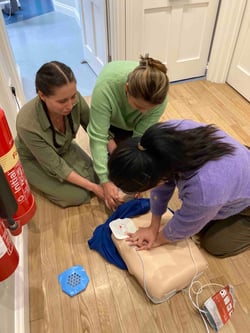.jpg)
Our Elmsleigh House team spent an interesting afternoon attending our annual training on medical emergencies in the dental setting. We are so lucky to have John Horton revisit us, as he brings his wealth of experience and knowledge.
John is an immediate care practitioner and paramedic with a Master’s degree in medical education and is a clinical skills tutor at Anglia Ruskin University, Chelmsford. He has worked remotely as a paramedic in South Africa, Qatar and the US, and has experience of expedition medicine from projects in Iceland and Goa. He is an instructor for Resuscitation Council UK and The Royal College of Surgeons, England, and is an examiner at The Royal College of Surgeons of Edinburgh for the Diploma of Immediate Care.
John covered an extensive range of medical emergency scenarios, including awareness and what to do if presented with a patient, carer or team member with symptoms of early stroke, sepsis, severe asthma, anaphylaxis, hypoglycaemia in diabetics, heart attacks and panic attacks, amongst others. He recapped our knowledge of signs and symptoms, what to do and how we can use our medical emergency medicines and training to help save a person's life as we wait for the ambulance to arrive.
An essential part of the session was CPR (cardiopulmonary resuscitation), an emergency procedure that can help save a person's life if their breathing or heart stops. When a person's heart stops beating, they are in cardiac arrest, and immediate life-saving treatment is needed.
We have a defibrillator at Elmsleigh House, which is an essential piece of equipment used to reshock a person’s heart following sudden cardiac arrest. If a defribrillator is used and effective CPR performed within 3–5 minutes of a cardiac arrest, the chance of survival increases from less than 5% to as high as 70% or more!
CPR combines a continuous cycle of 30 chest compressions, two pumps of air, and use of the defibrillator to administer electrical shocks to restart the person's heart. The team practised administering CPR in groups to enable rotation of roles to administer the chest compressions, pump air and use the defibrillator to shock.
The whole session was a valuable recap in our skills in being able to deal with medical emergencies if they are presented to us in the clinic, as well as equipping us with valuable knowledge for use in our daily lives.
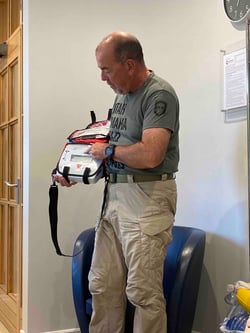
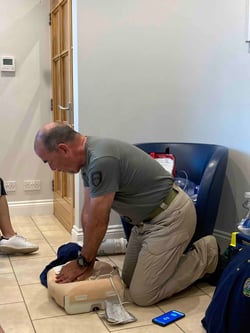 .
. 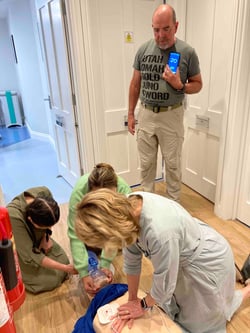 .
. 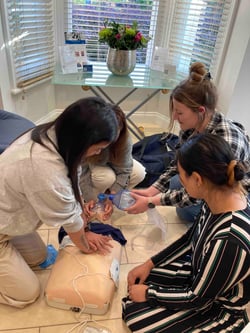 .
. 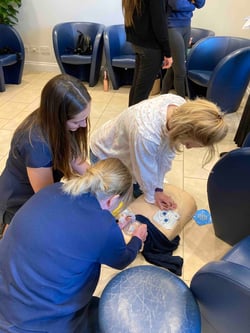 .
. 